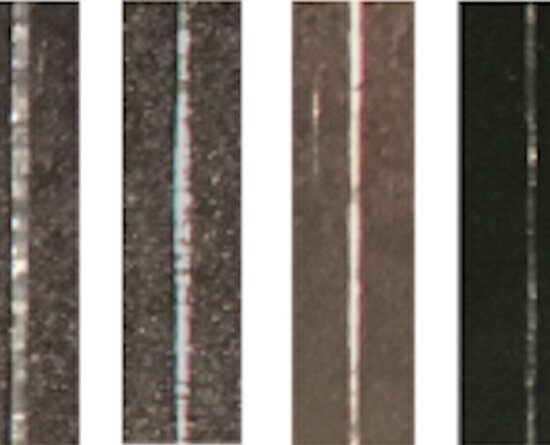The idea of incorporating actual muscles or neurons into a robotic system might sound like science fiction, but researchers in Carnegie Mellon University’s Department of Mechanical Engineering are taking steps to make it a reality.
This field, known as biohybrid robotics, is the central focus of the Biohybrid and Organic Robotics Group (B.O.R.G.), led by Victoria Webster-Wood, an assistant professor of mechanical engineering.
“Our ultimate goal is to be able to use biological materials as engineering materials in robotics to create renewable, biodegradable robots,” she says.
In a paper published in The Journal of Biomedical Engineering, Ph.D. student Wenhuan Sun aimed to better understand how to fabricate material threads to use in these special robots. The threads are made from collagen, a naturally-occurring protein found in structural tissues like skin, ligaments, and tendons.
In essence, the goal of this research was to better understand how to make an artificial tendon for use on a robot. In our bodies, tendons work to connect muscle to bone and are rather strong. This means that these collagen threads could be used for a very similar purpose in a robot, connecting living muscle actuators to the robot, helping it to walk, jump, or swim.
But the mechanical properties of the robot’s materials can have a big effect on how living muscle actuators grow and perform.
This means that Sun would not only have to understand how best to create these collagen threads, but also explore how to tune their mechanical properties. Depending on what you want your robot to do, you might need a material that is more muscle-like or more tendon-like.
Sun’s threads were created using a technique called electrocompaction. It was first developed for use in tissue engineering, and is now being fine-tuned by groups like the B.O.R.G.
To create the threads, collagen fibers are moved through a special type of cell called an electrocompaction cell, thanks to the charge that they naturally carry. The fibers will eventually get compacted together in the process, creating electrochemically aligned collagen (ELAC) threads.
Sun wanted to investigate just how much you could tune this compaction process to create different threads, in order to diversify the fabrication process as a whole. Previous work from tissue engineering primarily focused on making the strongest, most tendon-like threads possible. Biohybrid robotics require a bit more nuance and finesse.
When first compacted, the threads are surprisingly brittle and hard to work with—not yet robust like natural tendons. Sun recounted the difficulty of trying to place the compacted threads into a container. “Because there’s static around the plastic container, the thread wants to cling or stick to either side of the walls. That makes things very difficult,” he explained.
Even though the threads can be rather long—Sun created one that was up to 40 centimeters (around 15 inches)—they’re incredibly thin. The widths ranged from approximately 50 to 100 microns—about that of a human hair.
With time and and practice, he was able to carry out a series of experiments determining how a set of fabrication parameters affect the resulting thread. He also studied the interactions between these parameters and was able to achieve a wide range of tunable properties.
Even though the results were somewhat expected—more time spent allowing the threads to compact led to stronger, larger threads, for example—this study was the first, verifiable evidence of the team’s suppositions and will help future researchers design and select electrocompacted collagen materials for their own work. Sun was also able to train a deep neural network in order to recommend specific fabrication parameters based on what mechanical properties a particular researcher might want.
For next steps, Sun aims to feed the threads into a 3D printer so they can be used to create different shapes and structures. He’s currently working alongside Adam Feinberg, professor of biomedical engineering and materials science and engineering, to do exactly that. The strength of the compacted collagen threads means that they could be used for a broader set of applications than soft, squishy, muscle-based prints, and likely will help a new generation of biohybrid robots get off the ground, quite literally.
3-D printed microfibers could provide structure for artificially grown body parts
More information:
Wenhuan Sun et al, Tuning the Mechanical and Geometric Properties of Electrochemically Aligned Collagen Threads Toward Applications in Biohybrid Robotics, Journal of Biomechanical Engineering (2021). DOI: 10.1115/1.4049956
Provided by
Carnegie Mellon University Mechanical Engineering
Citation:
Tuning collagen threads for biohybrid robots (2021, July 2)
retrieved 2 July 2021
from https://techxplore.com/news/2021-07-tuning-collagen-threads-biohybrid-robots.html
This document is subject to copyright. Apart from any fair dealing for the purpose of private study or research, no
part may be reproduced without the written permission. The content is provided for information purposes only.



